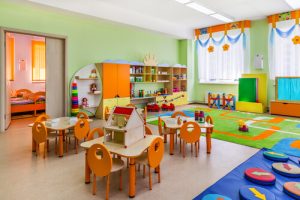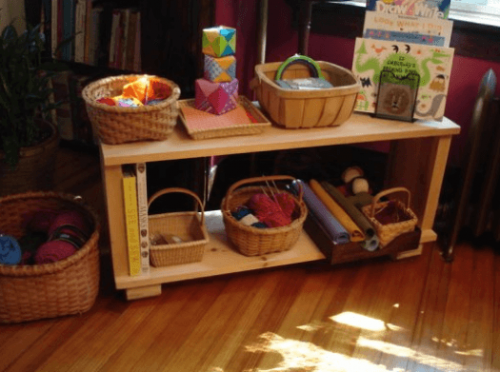How to Organize a Classroom According to the Montessori Method

In this article you’ll find guidelines on how to organize a classroom according to the Montessori method.
In Montessori classrooms, children are taught how to regulate their own social interactions. To organize a classroom according to this method, the room must be equipped with places for children to learn and play.
These activities should be carried out in many different ways: individually or collectively, in small groups, large groups, etc.
All the items available in the environment should be adapted to the size and age of the children. This rule also includes furniture, shelves, utensils, tableware and educational materials.
Another peculiar characteristic of organizing a classroom according to the Montessori method is that there is no focal point.
This means, among other things, that the teacher is not placed in the center of the classroom or in the children’s focus of attention. Rather, everyone makes up the classroom community.
The importance of organization
Organization is one of the keys of the Montessori method, which is characterized by favoring the children’s development through independence, freedom with limits, respect for natural psychology and physical and social development.
Among other characteristics, Montessori-style classrooms are warm, well organized and welcoming. They have sofas, carpets and flowers that make children and young people feel at ease and at home.

How to organize the classroom according to the Montessori method
Here are 10 guidelines to organizing the classroom according to the Montessori method:
1. Good lighting
The first element that should be taken into account is the lighting. It must be natural, with soft colors and clear spaces. This is how we create an environment that allows us to carry out a focused and relaxed activity.
2. Accessibility to materials
The learning materials are on accessible shelves. This encourages independence as students perform their work.
In the Montessori classrooms, everything is where it’s supposed to be. It conveys a sense of harmony and order that comforts and inspires students.
3. Defined spaces
In this type of classroom, there are adequate spaces for group and individual activities. In them, the student can develop and enhance their skills.
All the areas are designated for certain purposes in the classroom. There are shelves or tables with a variety of attractive materials.
4. Area dedicated to peace and reflection
One of the main differences included in Montessori classrooms is an area dedicated to peace and reflection.
It is a corner or table with well-chosen elements, such as a vase of daisies or a bowl of colorful fish, that will allow students to carry out meditative thinking.
The educational system should be built thinking about the development of children.
-Richard Gerver-
5. Reading areas
In Montessori classrooms, there are always places for books. These are perfectly designed so that children can read. In this way, children are encouraged to develop their interest and passion for books.
6. Good design
Another feature is that the classrooms are perfectly designed. All learning materials are on open and easily accessible shelves. Consequently, the materials are always arranged from simplest to the most complex.
7. Teacher’s freedom
Because the teacher isn’t meant to be the center of attention, he or she may be difficult to detect.
The teacher often sits on the floor or at a table. This allows them to observe their students hard at work, making notes about their progress and receiving questions from children.
8. Images on the walls
Montessori classrooms usually contain real life images hung on the walls, with the aim of adding interest for the little ones. The images should show people, objects or scenes from real life and be at the children’s eye level.

9. Smaller furniture
All classroom furniture should be adapted to the height of the children, such as the shelves. These should allow children to reach for the books without the teacher’s help.
Also, the tables and chairs must be child-sized so they can be easily manipulated by the students.
10. Presence of plants
Finally, all Montessori classrooms include plants inside. This is another one of their most outstanding features, since it helps the children work together as protectors of their surroundings. They can take turns watering the plants, for example.
The Montessori method for organizing educational spaces has great benefits and is becoming more and more popular. Implement some of these changes and evaluate their results in the little ones.
This text is provided for informational purposes only and does not replace consultation with a professional. If in doubt, consult your specialist.
